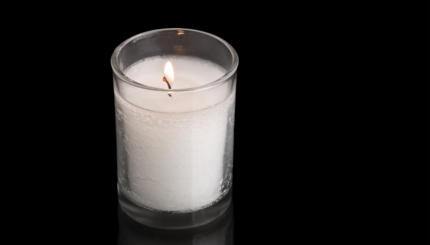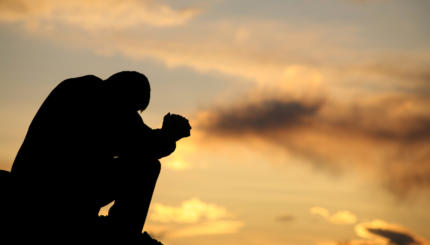Looking for the text of the Mourner’s Kaddish? Click here!
For a video on How to Say the Mourner’s Kaddish, scroll to the bottom of this article.
Kaddish (‘sanctification’) is the doxology in Aramaic in which the hope is expressed that God‘s great name will be sanctified in the whole world He has created and the Kingdom of Heaven be established on earth.
Originally the Kaddish was recited after an Aggadic homily was delivered by a teacher, since the Aggadah generally sounds a note of consolation and hope for the future. From the period of the Geonim the Kaddish was introduced into the liturgy of the synagogue to mark the end of a section or subsection of the prayers. The subsections conclude with what is known as half-Kaddish, that is, a shorter form containing only the first half of the doxology, and the larger sections with the full Kaddish which contains a prayer for the supplications of Israel to be acceptable to God.
 After the section in the liturgy that is in the form of a brief Rabbinic discourse, the older, school version of the Kaddish is recited. This contains a prayer for the well-being of students of the Torah and hence is known as Kaddish De-Rabbanan (‘Kaddish of the Rabbis’).
After the section in the liturgy that is in the form of a brief Rabbinic discourse, the older, school version of the Kaddish is recited. This contains a prayer for the well-being of students of the Torah and hence is known as Kaddish De-Rabbanan (‘Kaddish of the Rabbis’).
At a funeral the sons of the deceased recite an even longer version of the Kaddish in which reference is made to the resurrection.
In the Middle Ages in Germany Kaddish Yatom (‘Mourner’s Kaddish’) was introduced and this has been adopted by Jews everywhere. A son (in some communities a daughter as well) recites this special Kaddish for 11 months after the death of a parent and on the anniversary (Yahrzeit) of the death. The principle behind the Mourner’s Kaddish is that when the child sanctifies God’s name in public by reciting the doxology, merit is accrued to the parent’s soul.
Very many Jews, otherwise not particularly observant of the rituals, observe meticulously ‘saying Kaddish’, as it is called, attending services for the purpose each morning and evening since, according to Orthodox practice, Kaddish can only be recited in a minyan, the quorum of ten males (in Conservative synagogues females count as well).
Reprinted from The Jewish Religion: A Companion, published by Oxford University Press.
Louis Jacobs, a British rabbi and theologian, served as rabbi of the New London Synagogue. Rabbi Jacobs lectures at University College in London and at Lancaster University. He has written numerous books, including Jewish Values, Beyond Reasonable Doubt, and Hasidic Prayer.
© Louis Jacobs, 1995. Published by Oxford University Press. All rights reserved. No part of this material may be stored, transmitted, retransmitted, lent, or reproduced in any form or medium without the permission of Oxford University Press
Sign up for a Journey Through Grief & Mourning: Whether you have lost a loved one recently or just want to learn the basics of Jewish mourning rituals, this 8-part email series will guide you through everything you need to know and help you feel supported and comforted at a difficult time.
Looking for a way to say Mourner’s Kaddish in a minyan? My Jewish Learning’s daily online minyan gives mourners and others an opportunity to say Kaddish in community and learn from leading rabbis.
Kaddish
Pronounced: KAH-dish, Origin: Hebrew, usually referring to the Mourner’s Kaddish, the Jewish prayer recited in memory of the dead.


